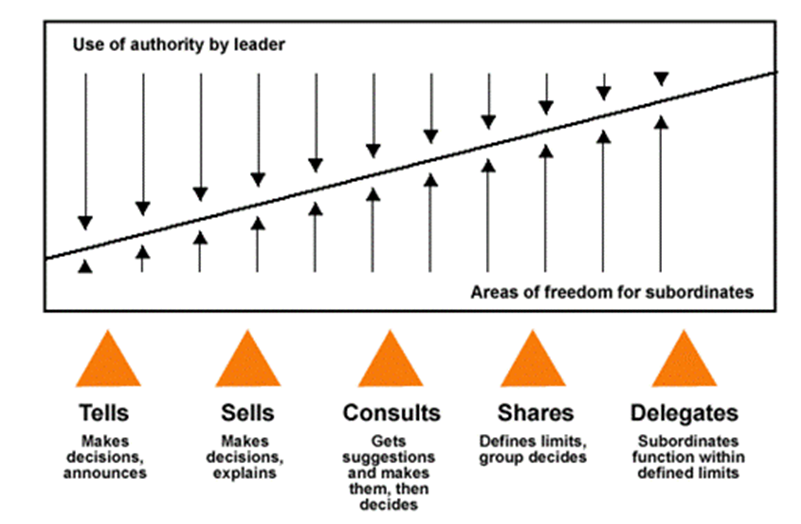Leadership Continuum Theory by Tannerbaum and Schmidt
Leadership Continuum Theory is a contingency leadership theory developed by Tannenbaum and Schmidt (1958). This theory is based on the idea that many classifications of leadership such as autocratic or democratic are extremes and leadership practices in real life situations lye somewhere between the two extremes.
In other words, the main rationale behind the introduction of the model is that current classifications of leadership styles are too general, in black and white terms, and in reality leadership practices exercised by the majority of organisational managers lies somewhere in the middle.
Tannerbaum and Schmidt’s Leadership Continuum Theory effectively addresses the criticism that leadership styles cannot be described in highly general ‘authoritarian’ or ‘democratic’ manners, and the actual leadership styles practiced in the majority of organisations lie somewhere between the two (Gosling et al, 2003)
Accordingly, Tannenbaum and Schmidt (1958) propose the idea of leadership continuum and place different variations of leadership practices along the continuum that move from autocratic leadership style towards democratic. Specific leadership styles specified within the continuum include telling, selling, consulting, and joining leadership styles.
The Leadership Continuum Theory represents a just and valuable framework for analysing leadership style. This is because the theory provides wider options for the classification of leadership style, and thus has a high level of applicability in the real life business management.
However, according to the criticism of Leadership Continuum Model “three factors to consider when selecting a leadership style are very subjective. In other words, determining which style to use, and when, is not clear in the model” (Lussier and Achua, 2010, p.161).
References
Gosling, B.R., Marturano, J. & Dennison, P. (2003) “A Review of Leadership Theory and Competency Frameworks” University of Exeter
Lussier, R.N. & Achua, C.F. (2010) “Leadership: Theory, Application, & Skill Development” 4th edition, Cengage Learning
Tannenbaum, R. & Schmidt, W. (1958) “How to choose a leadership pattern” Harvard Business Review 36(2), pp.95-101

